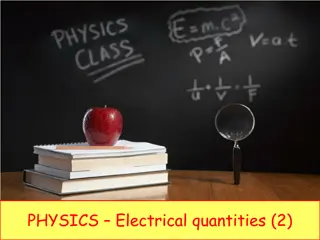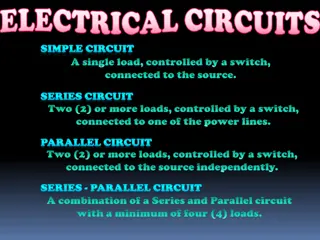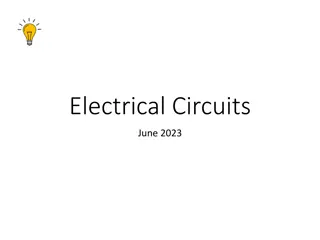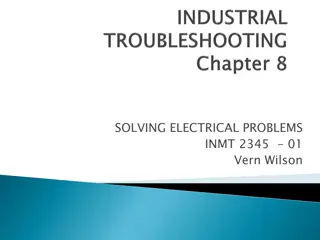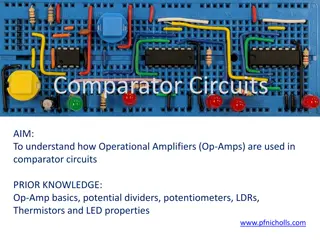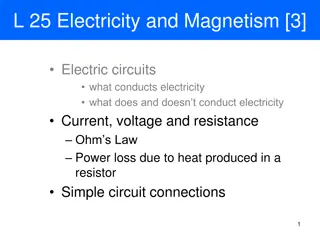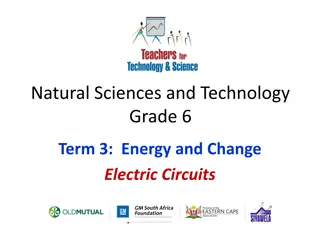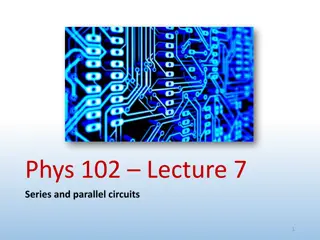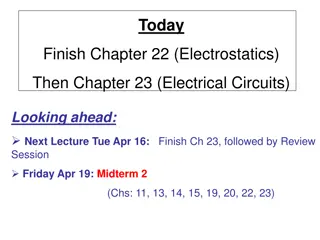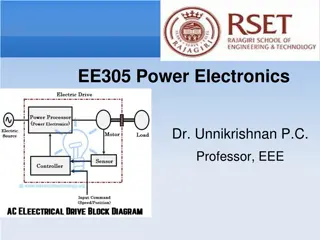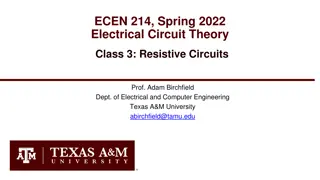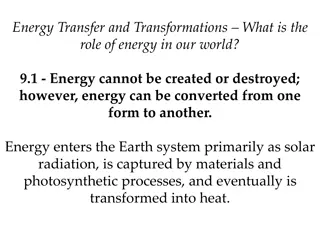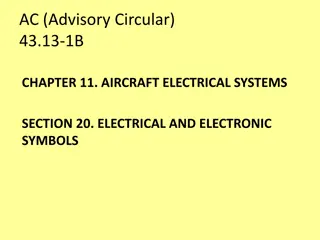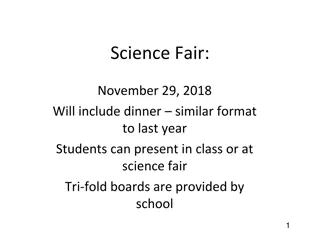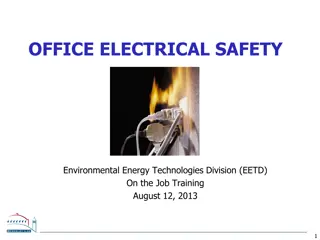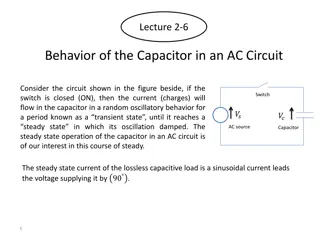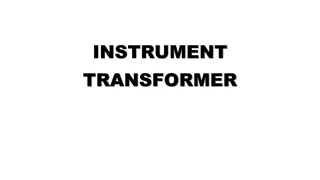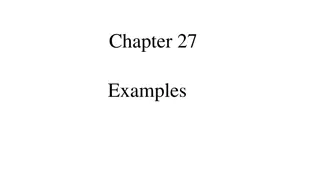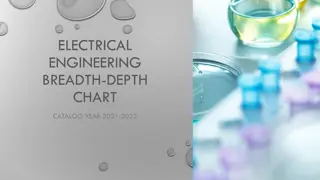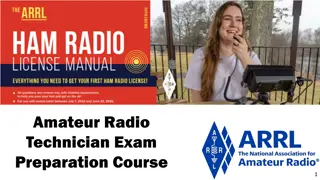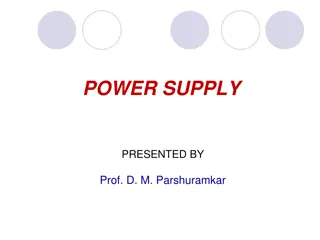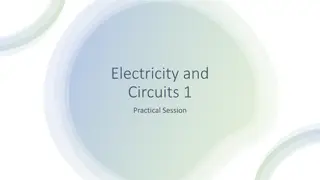Understanding Electrical Power in Circuits
This lesson focuses on the concept of electrical power in circuits, covering topics such as calculating power, determining fuse requirements, and understanding energy transfer. It includes equations, practice questions, and explanations related to current, potential difference, and wattage. The lesson also explores the interrelation between electrical quantities like current, charge, and power.
Download Presentation

Please find below an Image/Link to download the presentation.
The content on the website is provided AS IS for your information and personal use only. It may not be sold, licensed, or shared on other websites without obtaining consent from the author. Download presentation by click this link. If you encounter any issues during the download, it is possible that the publisher has removed the file from their server.
E N D
Presentation Transcript
Equipment This lesson has a small focus on a new equation, other than that it is a small recap and equation practice. Calculators
Recap: True or False Recap: True or False 1. The earth wire in a three-core cable is usually brown 2. Appliances with metal casings are supplied with three-core cables 3. Fuses stop current flowing through a circuit by melting when the current flowing through them is above a certain value 4. A circuit breaker works by monitoring the difference in current between the live and earth wire 5. Mains electricity uses direct current at 100Hz.
Lesson intentions: Watt is the unit of Power! Date and title: Electrical Power 13 September, 2024 S t e p s Learning outcomes: 4 current and the potential difference Calculate the power of an appliance from the t o Find the fuse required for an appliance based on its power rating 6 S u c c e s s Perform calculations involving rearrangement of the power equation 8 Key words: Current, Potential Difference, Power, Watt, Joules
BIGGER PICTURE Fuses and Circuit breakers ACDC Plugs Electrical Power TOPIC Electricity in the home Energy Transfer Appliances and efficiency
Current, Charge and Power Match up the electrical quantities, with their abbreviations and units. I V E power ampere Energy R Voltage volts resistance watts joule P current Can you provide any definitions for these units? Extension: can you describe how these factors are interrelated by giving equations or describing the links in sentences?
POWER ( POWER (P P) ) Power is the rate at which something transfers energy Energy Transferred (J) Time taken for energy to be transferred (s) E t Power (W) = P= W = Watts 1W = 1J per second
Energy and Power A portable fan transfers 1800 joules of energy in 60 seconds. What is its power rating? P=E/t = 1800J/60s = 30W A mains-powered hairdryer is rated at 500W. How much energy will it transfer in 1 minute? E=Pxt = 500 x60 = 30,000J
POWER ( POWER (P P) ) It can also be calculated for the components within a circuited or appliances from the current and voltage! Power (W) = Current (A) x Voltage (V) P= I x V W = Watts 1W = 1J per second
For the 40W, 60W and 100W bulbs calculate the current flowing. 0.17A, 0.26A and 0.43A What fuse should each of the lamps have?
Rearrange it! If you have a filament bulb and it operates at a power of 60W and it has a potential difference of 240V across it, what is the current running through the bulb? P = IV I = P/V I = 60W / 240V I = 0.25A
kV, kJ, kW 1 kV = 1000 V 1 kJ = 1000 J 1 kW = 1000 W _________ V 6 000 How many Volts in 6kV? _________ J 12 300 How many Joules in 12.3kJ? 600 How many Watts in 0.6kW? _________ W
kV, kJ, kW 1 kV = 1000 V 1 kJ = 1000 J 1 kW = 1000 W _________ kV 9.0 How many kiloVolts in 9 000V? 23.5 How many kiloJoules in 23 500J? _________ kJ 0.325 How many kiloWatts in 325W? _________ kW
Power and Fuses The table shows the power ratings of different electrical appliances. A Calculate the current used by each appliance. (Hint: don t forget to change kW to W before calculating your answer.) B Work out what size fuse would be needed by the plug for each appliance. Choose from: 3 A, 5 A, 13 A. Appliance Power rating Current (A) Fuse a Computer 67 W b Fridge 63 W c Fridge-freezer 100 W d Lawnmower 900 W e Toaster 850 W f TV 90 W g Hair dryer 1 kW h Electric fire (2 bars) 2 kW i Tumble dryer 1.5 kW j Kettle 2.5 kW
Power and Fuses The table shows the power ratings of different electrical appliances. A Calculate the current used by each appliance. (Hint: don t forget to change kW to W before calculating your answer.) B Work out what size fuse would be needed by the plug for each appliance. Choose from: 3 A, 5 A, 13 A. Appliance Power rating Current (A) Fuse a Computer 67 W 0.29 0.27 0.43 3.91 3.70 0.40 4.34 8.70 6.52 10.87 3A 3A 3A 5A 5A 3A 5A 13A 13A 13A b Fridge 63 W c Fridge-freezer 100 W d Lawnmower 900 W e Toaster 850 W f TV 90 W g Hair dryer 1 kW h Electric fire (2 bars) 2 kW i Tumble dryer 1.5 kW j Kettle 2.5 kW
Power Loss Power Loss Remember how we talked about the variables being the same across equations? The resistance of a component and the current flowing through it determine how much energy is dissipated from it as heat P= I x V V = I x R How many variables are there in these 2 equations? What do they have in common?
Power Loss Power Loss This means you can substitute variables with other equations! What if you don t have V and you want to calculate power?? P= I x I x R V = V The same!
Power Loss Power Loss This means you can substitute variables with other equations! What if you don t have V and you want to calculate power?? P= I x P= I2xR I x R V = V The same!
POWER ( POWER (P P) ) A 6kW (6000w) oven is connected with a cable of resistance 0.25 . When it is switched on a current of 26A passes through it. Calculate the power wasted in the cable through heating P= I2xR P= I x I x R P= 26 x 26 x 0.25 P= 169W P = ? I = 26 A R = 0.25
Q Questions uestions 1. A light bulb is connected to a 2V supply and experiences a current of 6.4A. What is the power rating of the bulb? A kettle has a power rating of 1500w. What is the potential difference that it must be supplied with to have a current flowing through it of 30A? A student attaches a 10V supply to a bulb with a power rating of 100w. What is the current running through the bulb? The student now connect a 25w bulb to the same supply. What is the difference between the current going through this bulb compared to the 100w bulb? Bulb A transfers 1000J in 10seconds. Bulb B transfers 1500J in 3 seconds. Which bulb will have a higher current running through it when connected to a 12V supply? 2. 3. 4. 5.







